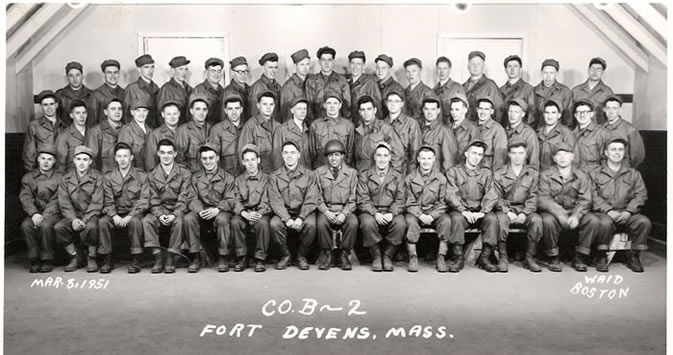History
Camp Devens was established in 1917 on about 5000 acres of land leased then later purchased from 112 owners who sold 230 parcels of land in the towns of Ayer, Harvard, Lancaster and Shirley, to the United States of America. Some was fine farmland along the Nashua River and other was “sprout” land where trees had been cut leaving stumps.
Construction, by the largest labor force assembled in the United States, to build an entire city for 10,000 requiring barracks, training buildings, water and sewer systems, raced at the rate of 10.4 new buildings every day. As one of 16 temporary cantonments, Camp Devens processed and trained more than 100,000 soldiers of the 76th and 12th Divisions. In 1918, it became a separation center for over 150,000 troops upon their return from France. Put on inactive status, it served next as a summer training camp for National Guardsmen, Reservists and ROTC cadets.
Following years of debate regarding preparedness for another global war, passage of the National Defense Act in 1920 established an important role for the citizen army. Appropriations were made for permanent construction of buildings in 1927 but the stock market crash nearly called a halt. Congresswoman Edith Nourse Rogers, of Lowell, recognized the economic significance of Camp Devens to this largely agricultural community. Through her efforts, Camp Devens became Fort Devens, a permanent US Army post in 1931. However, during the depression, construction was slow; most of the work was done by the Works Progress Administration.
Fort Devens Historic District is a fine and well preserved example of the United States Army post planning of the standardized building types constructed between 1929 and 1940. It includes important landscape structures that relate to its broad plan and contribute to the setting of the District. This permanent cantonment gives a sense of time and place. It is a clear connection to the City Beautiful and Garden City planning of that period. There is a pleasing harmony between the Georgian Revival red brick structures and the sturdy, simple, native landscaping of pine, oak, maple, black walnut, elm and other low maintenance material. The 103 contributing properties on the 300 acres at the main entrance at Verbeck Gate were placed on the National Register of Historic Districts in 1991.
In 1940, the first peacetime draft was instituted and Fort Devens became a reception center for hundreds of men from all over New England. Building boomed on the post. More than 1200 wooden barracks were thrown together during the early days of World War II and an airport, known later as Moore Army Airfield, was opened in 1941. Devens trained nurses, chaplains, cooks and bakers as well as the troops of the 1st, 32nd and 45th Infantry Divisions and the Fourth Women’s Army Corps.
After serving as a demobilization center for New England troops, the base was again declared excess and was put on caretaker status. The GI Bill of Rights brought so many students to colleges that the University of Massachusetts had an extension at Devens and Harvard University used it for student housing. Thousands of officers, enlisted men and civilians were trained as linguists, cryptographers, code operators, traffic analysts and specialists at the Army Security Agency Training Center and School following its activation in August 1951 until its move to Fort Huachuca when the base closed.
With the outbreak of the Korean Conflict, Devens was designated as a reception center for the third time in its history. No divisions, but many smaller units were assigned. During the Vietnam Conflict, several brigades were sent from Fort Devens. Over 3000 reservists and National Guard troops were deployed for Operation Desert Storm and Desert Shield in 1990-01.
Despite a valiant political effort to keep it open, Fort Devens closed in 1996, under the national Base Realignment And Closing Act. After a process involving planning for reuse, the Massachusetts Development Finance Agency, now MassDevelopment assumed the economic development and management for a 40-year period. If the Army ceases to need it, those 5,000 acres in the South Post will become an extension of the Oxbow National Wildlife Refuge of the US Department Interior.






